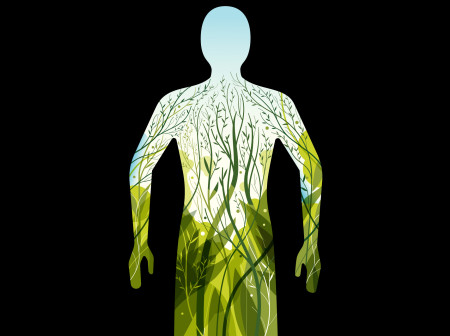The first genetic mutation that appears to protect against multiple aspects of biological aging, including Type 2 diabetes, has been discovered in a community of Amish living in rural Berne, Ind., according to Northwestern scientists.
Indiana Amish kindred (immediate family and relatives) with the mutation live more than 10 percent longer and have lower fasting insulin levels than individuals without the mutation. They also have 10 percent longer telomeres (a protective cap at the end of chromosomes that is a biological marker of aging) and a lower vascular age, indicating retained flexibility in blood vessels.
“The findings astonished us because of the consistency of the anti-aging benefits across multiple body systems,” says Douglas Vaughan, the lead author of the paper and the Irving S. Cutter Professor and chairman of medicine at the Feinberg School of Medicine.
For the first time, a molecular marker of aging (telomere length), a metabolic marker of aging (fasting insulin levels) and a cardiovascular marker of aging (blood pressure and blood vessel stiffness) all point to protection against age-related changes, Vaughan adds. “That played out in them having a longer lifespan. Not only do they live longer, they live healthier. It’s a desirable form of longevity. It’s their ‘health span.’ ”
Amish individuals with the mutation have very low levels of PAI-1 (plasminogen activator inhibitor), a protein that is part of a “molecular fingerprint” related to the aging of cells. Vaughan, a cardiologist, has been studying PAI-1 for almost 30 years.
Northwestern partnered with Tohoku University in the development of an oral drug that inhibits the action of PAI-1. The drug has been tested in a phase 1 trial in Japan and is now in phase 2 trials. Northwestern will apply for U.S. Food and Drug Administration approval to start an early phase trial in the United States, possibly to begin within the next six months. In a 2014 study, Vaughan showed that a PAI-1 inhibitor drug prolonged the lifespan in a mouse model of accelerated aging. He also found that the drug caused hair to grow on transgenic models of mice that overexpress human PAI-1. The mice are bald.
The drugs that target PAI-1 are the brainchild of Toshio Miyata, who leads a drug discovery program at Tohoku University. The Japanese startup company Renascience has licensed a formulation to the American company Eirion Therapeutics Inc., which is advancing the development of a topical formula that will be tested for the treatment of male pattern baldness.
So how did the isolated population of Indiana Amish tap into a genetic fountain of youth? Their ancestors emigrated to Indiana from Berne, Switzerland, in the mid-19th century. Two farmers from Switzerland who carried the mutation married into the Amish community in Indiana. The Amish community outside Berne, Ind., does not carry this mutation.
“This is the only kindred on the planet that has this mutation,” Vaughan says. “It’s a ‘private mutation.’ ”
People with the mutation live to be 85 on average, significantly longer than the 71-year predicted lifespan for Amish in general. But the deficiency of PAI-1 has also been linked to a rare bleeding disorder, discovered in the early 1990s by Amy Shapiro, a hematologist at the Indiana Hemophilia & Thrombosis Center. The disorder affects people with two copies of the mutated gene that inhibits PAI-1, which also plays an important role in the human blood-clotting system. Individuals with two copies of the mutated gene also had varying degrees of a cardiac disorder that leads to fibrosis.
When Vaughan read Shapiro’s published journal articles on the Amish kindred with the unusual PAI-1 mutation, he contacted her and said he had a hunch that the carriers of the mutation might be protected from aging — and that members of the kindred with one copy of the gene mutation do not appear to have a bleeding problem or cardiac problems. This suggested to him that giving people a drug that blocks PAI-1 might be safe as long as it provides incomplete inhibition.
On May 5, 2015, Vaughan brought a team of 40 researchers to Berne and set up 10 testing stations at a nearby community center. Over the next two days, 177 Amish — curious about the mutation — arrived by horse and buggy for screening. Northwestern collaborated with colleagues from the Indiana Hemophilia & Thrombosis Center on the testing.
Cognitive testing will be part of future measurements for the study. Experimental data in mice shows lower levels of PAI-1 can protect against Alzheimer’s-like pathology.
“We hope to be able to revisit them regularly and do additional testing to look at the velocity of aging in this kindred and unearth more details about the protective effect of this mutation,” Vaughan says.




Reader Responses
No one has commented on this page yet.
Response submission has been disabled for this article.